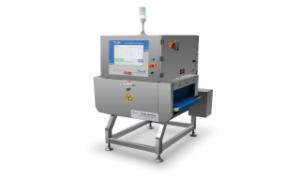Flow Wrapping: Basics & Machinery
Food items to cosmetics, gadgets, etc., everything needs packaging to become ready for retail. Traditionally, glass, metals, and plastics have been popular packaging materials. However, today's industries demand customization and economical packaging solutions. That's when flexible packaging comes to the rescue. As the name implies, flexible packaging generally includes those materials that are non-rigid. One of the major examples of flexible packaging is flow wrappers.
What
is flow wrapping?
Flow
wrapping is a process in which the product moves in a horizontal conveyor belt
and is then wrapped in a thin plastic film and sealed at the end by the machine.
This setup is also known as the horizontal flow wrapping machine. These
packaging films are also called flow wraps since they technically wrap around
the products to form a bag/pouch/packet. Flow wrappers have gained
significant popularity in food processing and other industries because of the
following benefits:
- Protects
the product – Since the flow wrap packs
the product closely, it allows minimal movement. Thus, the product inside
the packet is not disturbed and stays intact in optimum storage conditions.
- Fast
production – The flow wrapping follows a
simple form fill and seal mechanism, which makes the operation smooth and
fast. It is ideal for high-volume production.
- Easy
customizability – The
flow wrap can be clear, printed, or in a single colour, making them highly
customizable.
- Printability
– Flow wrapper machines
often come with photocells and print centering, which makes printed
packaging easy.
- Reduced
wastage – Flow wrapping typically uses
limited material, leaving no long tails and excessive wastage.
Flow
wrapping machine
Horizontal
flow wrapping machines are the ultimate life savers in most small to large food
processing industries. This machine consists of a conveyor belt, a packaging
and sealing machine, and a computer. A typical flow wrapping machine mechanism
looks like this:
1.
Firstly, a conveyor belt feeds the
product into the flow wrap machine.
2.
Secondly, the product is wrapped with
a set material length and width (rectangular or square).
3.
Lastly, the ends are sealed or
crimped to create a pouch/packet/pillow and then cut into individual packets.
Nowadays, electronic flow wrap machines have made the function easier by introducing computerized control. It allows you to print the packages simultaneously and offer several other customizations.
Conclusion
Today, most packets, including chips, biscuits, baked goods, and even non-food products, are packed with flow wrappers. It is reliable, fast, and economical. You can also boost your production by getting a horizontal flow wrap machine from Optima. They offer premium quality packaging machinery at the most affordable rates. Visit their website today to check product specifications and details.
FAQs
Why
are flow wrappers a popular choice these days?
Flow wrappers are
generally flexible plastic wrappers that are non-rigid and highly customizable.
The flexibility, printability, and cost-effectiveness of flow wrappers make
them a popular packaging material.
What
types of products can be packed in flow wrapping machines?
Flow
wrapping is suitable for wet food, dry food, snacks, vegetables & fruits,
meat, bakery, and non-food products.
What
are the safety features of the horizontal flow wrapper machine?
Their
horizontal flow wrapping machine comes with an emergency stop switch and safety carter
with auto-stop.



Comments
Post a Comment